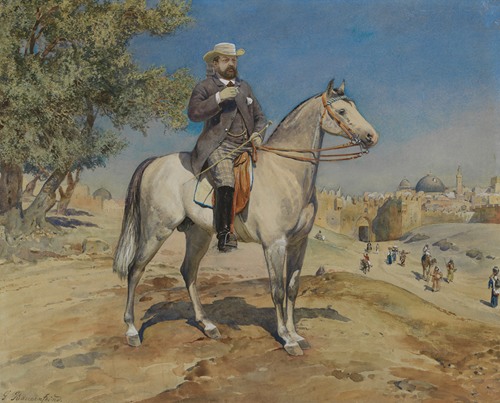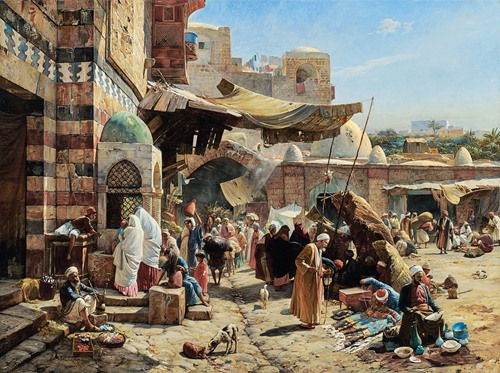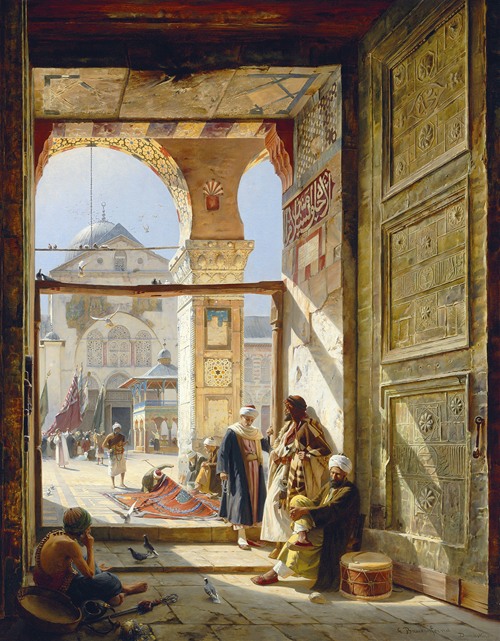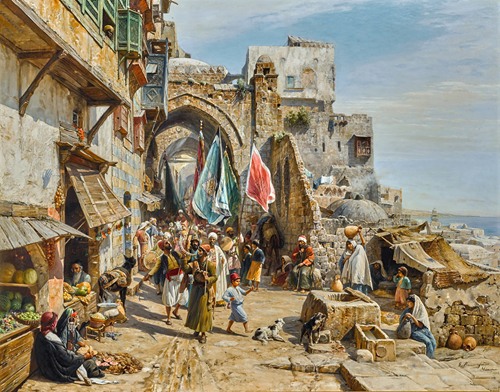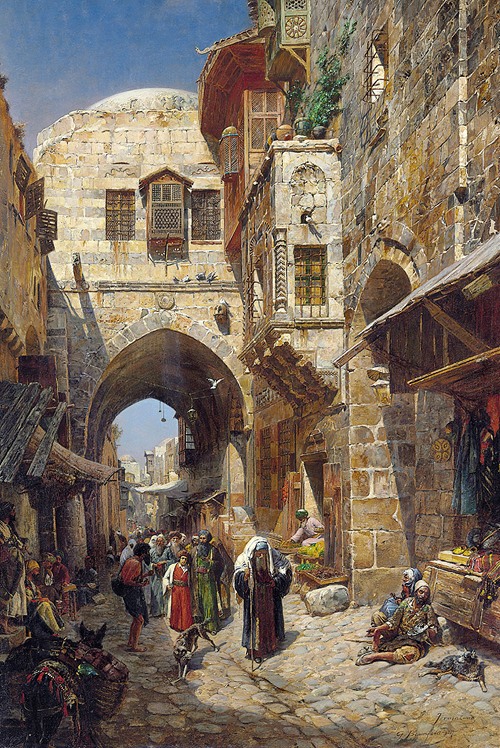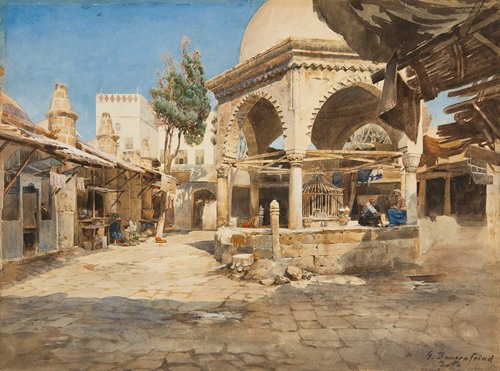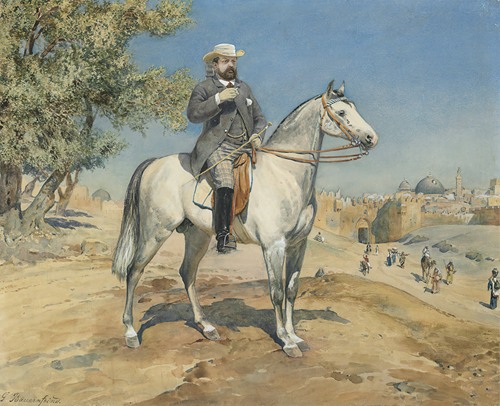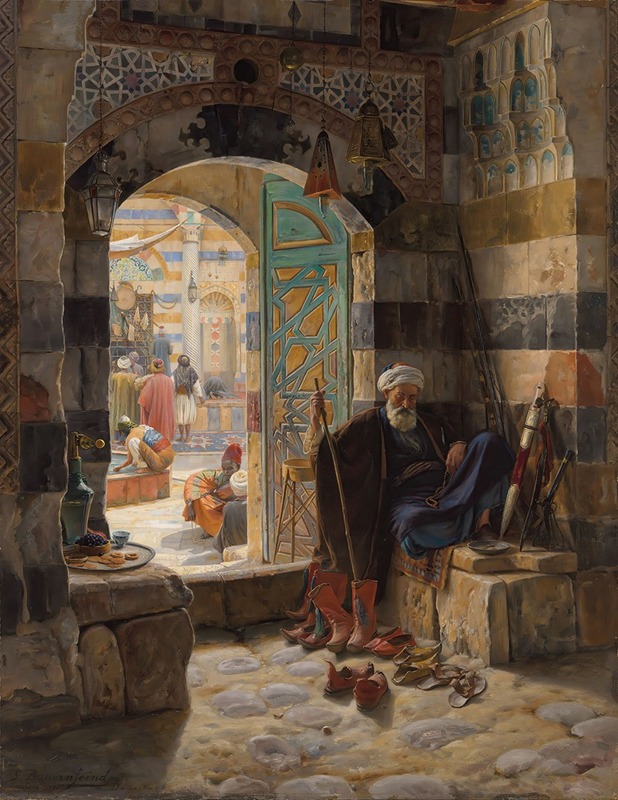
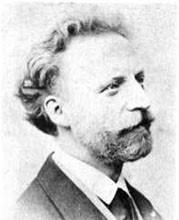
Gustav Bauernfeind was a German painter, illustrator and architect of partly Jewish origin. He is considered to be one of the most notable Orientalist painters of Germany.
After completing his architectural studies at the Polytechnic Institute in Stuttgart, he worked in the architectural firm of Professor Wilhelm Bäumer and later in that of Adolph Gnauth, where he also learned painting. In his earlier paintings, Bauernfeind focused on local views of Germany, as well as motifs from Italy.
During his journey to the Levant from 1880 to 1882, he became interested in the Orient and repeated his travels again and again. In 1896 he moved with his wife and son to Ottoman Palestine and subsequently settled in Jerusalem in 1898. He also lived and worked in Lebanon and Syria.
His work is characterized primarily by architectural views of Jerusalem and the Holy Land. The oil paintings of Bauernfeind are mostly meticulously crafted, intricately composed and almost photographically accurate cityscapes and images of known edifices. In addition, he produced landscape scenes and watercolours.
During his lifetime he was the most popular Orientalist painter of Germany, but would fade into irrelevance after his death. However, since the early 1980s, Bauernfeind was gradually rediscovered, with his paintings appearing at auctions with high prices. Thus, his oil painting The Wailing Wall was sold at Christie's in London for the equivalent of €326,000 in 1992. The same painting would reach at Sotheby's in London the equivalent of €4.5 million in a later auction in 2007. In 1997, another oil painting of Bauernfeind, The Port of Jaffa, was sold at the Van Ham Kunstauktionen in Cologne for 1,510,000 DM, thus becoming the most expensive 19th-century painting ever sold in Germany.
At his birthplace in Sulz am Neckar, the life and work of the painter is commemorated by the Gustav Bauernfeind Museum with a large permanent exhibition.
